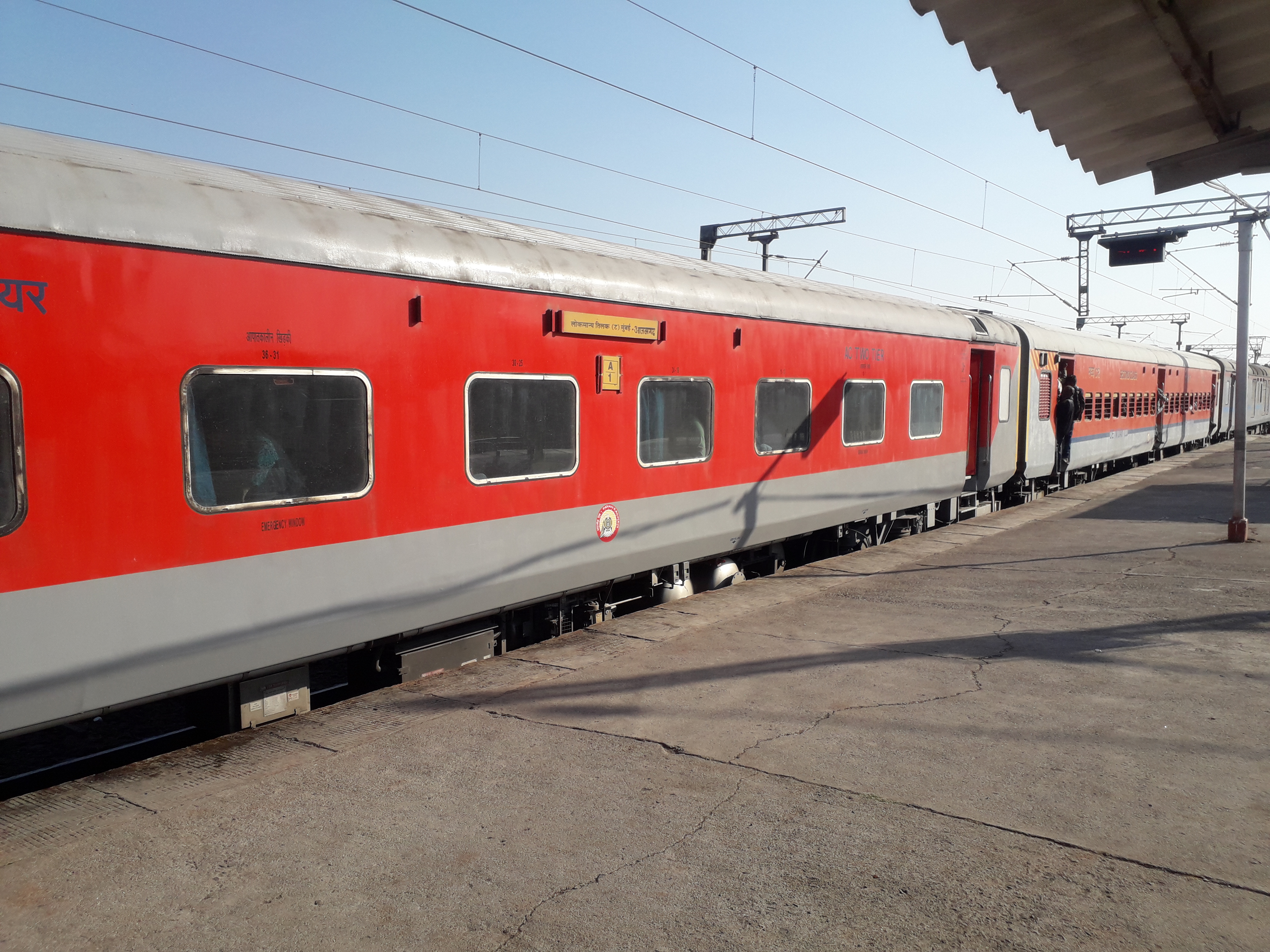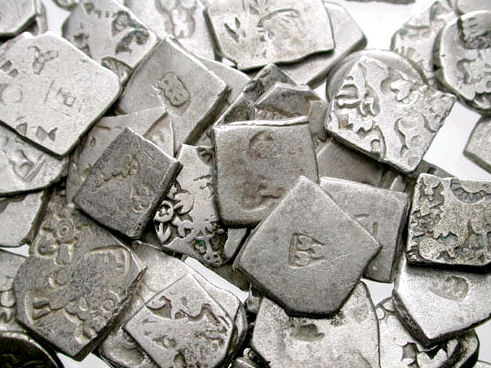|
P. L. Gupta
Parmeshwari Lal Gupta (P. L. Gupta) (1914 – 2001) was an Indian numismatist who collated previous research on Indian Numismatics in the post-Independence era. His collated work was published as 'COINS', a book by the National Book Trust in 1969. Early life and education Born on 24 December 1914 in Azamgarh in the United Provinces of Agra and Oudh, his education took place at Wesley High School in his hometown. His education was disrupted as he was expelled from his school in 1930 for joining a local political agitation. He turned to Hindi journalism for local newspapers. During this period, he was introduced to the study of Indian Numismatics by an acquaintance, Adv. Rama Shankar Rawat, a local collector of Indian antiquities. He soon pursued a Masters in Ancient Indian History & Culture at the Banaras Hindu University, Varanasi after finishing his Intermediate and B.A. at the same university.Indian Numismatics, History, Art and Culture - Essays in Honour of Dr. Parmeshwari ... [...More Info...] [...Related Items...] OR: [Wikipedia] [Google] [Baidu] |
Numismatist
A numismatist is a specialist in numismatics ("of coins"; from Late Latin ''numismatis'', genitive of ''numisma''). Numismatists include collectors, specialist dealers, and scholars who use coins and other currency in object-based research. Although use of the term numismatics was first recorded in English in 1799, people had been collecting and studying coins long before this, all over the world. The first group chiefly derives pleasure from the simple ownership of monetary devices and studying these coins as private amateur scholars. In the classical field amateur collector studies have achieved quite remarkable progress in the field. Examples are Walter Breen, a well-known example of a noted numismatist who was not an avid collector, and King Farouk I of Egypt was an avid collector who had very little interest in numismatics. Harry Bass by comparison was a noted collector who was also a numismatist. The second group are the coin dealers. Often called professional numismatist ... [...More Info...] [...Related Items...] OR: [Wikipedia] [Google] [Baidu] |
Numismatics
Numismatics is the study or collection of currency, including coins, tokens, paper money, medals and related objects. Specialists, known as numismatists, are often characterized as students or collectors of coins, but the discipline also includes the broader study of money and other means of payment used to resolve debts and exchange goods. The earliest forms of money used by people are categorised by collectors as "Odd and Curious", but the use of other goods in barter exchange is excluded, even where used as a circulating currency (e.g., cigarettes or instant noodles in prison). As an example, the Kyrgyz people used horses as the principal currency unit, and gave small change in lambskins; the lambskins may be suitable for numismatic study, but the horses are not. Many objects have been used for centuries, such as cowry shells, precious metals, cocoa beans, large stones, and gems. Etymology First attested in English 1829, the word ''numismatics'' comes from the adjective ... [...More Info...] [...Related Items...] OR: [Wikipedia] [Google] [Baidu] |
Azamgarh
Azamgarh is a city in the Indian state of Uttar Pradesh. It is the headquarters of Azamgarh division, which consists of Ballia, Mau and Azamgarh districts. Azamgarh is situated on the bank of Tamsa River (Tons). It is located east of the state capital Lucknow and 809 km from national capital, Delhi. History Azamgarh, one of the easternmost districts(a district in Purvanchal sub-region) of Uttar Pradesh, once formed a part of the ancient Kosala kingdom, except its north-eastern part. Azamgarh is also known as the land of the sage Durvasa whose ashram was located in Phulpur tehsil, near the confluence of Tamsa and Majhuee rivers, north of the Phulpur. The district is named after its headquarters town, Azamgarh, which was founded in 1665 by Azam, son of Vikramajit. Vikramajit was a descendant of Gautam Rajputs of Mehnagar in Pargana Nizamabad who like some of his predecessors had embraced the faith of Islam. He had a Muslim wife who bore him two sons Azam and Azmat. Wh ... [...More Info...] [...Related Items...] OR: [Wikipedia] [Google] [Baidu] |
United Provinces Of Agra And Oudh
The United Provinces of Agra and Oudh was a province of India under the British Raj, which existed from 1902 to 1921; the official name was shortened by the Government of India Act 1935 to United Provinces (UP), by which the province had been commonly known, and by which name it was also a province of independent India until 1950. It corresponded approximately to the present-day Indian states of Uttar Pradesh (UP) and Uttarakhand. Allahabad served as the administrative headquarters and the capital of the province. Two years after the annexation of Oudh State in 1856, ''i.e.'' after 1858 and until 1902, the region had existed as North-Western Provinces and Oudh, Oudh being a Chief Commissionership. History By the 18th century, the once vast Mughal Empire was collapsing, undone by internal dissension and by expansion of the Marathas from the Deccan, the British from Bengal, and the Afghans from Afghanistan. By the middle of the century, present-day Uttar Pradesh was divided b ... [...More Info...] [...Related Items...] OR: [Wikipedia] [Google] [Baidu] |
Banaras Hindu University
Banaras Hindu University (BHU) IAST: kāśī hindū viśvavidyālaya IPA: /kaːʃiː hɪnd̪uː ʋɪʃwəʋid̪jaːləj/), is a collegiate, central, and research university located in Varanasi, Uttar Pradesh, India, and founded in 1916. The university incorporated the Central Hindu College, founded by Indian Home Rule-leaguer and Theosophist, Annie Besant in 1898. After Besant and her associates were marginalized, the university was established by Madan Mohan Malaviya with the financial support of the maharaja of Dharbhanga Rameshwar Singh, the maharaja of Benares Prabhu Narayan Singh, and the lawyer Sunder Lal. With over 30,000 students, and 18,000 residing on campus, BHU is the largest residential university in Asia. The university is one of the eight public institutions declared as an Institute of Eminence by the Government of India. BHU has often been referred by different names throughout the history and present. Some of the English names include Banaras Univers ... [...More Info...] [...Related Items...] OR: [Wikipedia] [Google] [Baidu] |
Bharat Kala Bhavan
Bharat Kala Bhavan is a university museum located in Banaras Hindu University, Varanasi, India. It has been instrumental in the dissemination of knowledge on Indian art and culture. It is one of the important touristic attractions in the Banaras Hindu University and in the city of Varanasi. History The concept for Bharat Kala Bhavan came to fruition with establishment of ''Bharatiya Lalit Kala Parishad'' on 1 January 1920 in a wing in Godowlia, Varanasi. Between 1920 and 1962, the museum's collection was shifted to several locations within Varanasi before Jawaharlal Nehru laid foundation of the existing museum building in 1950 and the museum was, then shifted to its existing location in the Banaras Hindu University in 1962. Mahatma Gandhi visited Bharat Kala Bhavan thrice and in his final trip he inscribed "संग्रह बहुत अच्छा है" ("the collection is very good"). Milestones *1920: Bharatiya Lalit Kala Parishad established. *1926: ''Bharatiya Lal ... [...More Info...] [...Related Items...] OR: [Wikipedia] [Google] [Baidu] |
Punch-marked Coins
Punch-marked coins, also known as ''Aahat coins'', are a type of early coinage of India, dating to between about the 6th and 2nd centuries BC. It was of irregular shape. History The study of the relative chronology of these coins has successfully established that the first punch-marked coins initially only had one or two punches, with the number of punches increasing over time. The first coins in India may have been minted around the 6th century BC by the Mahajanapadas of the Indo-Gangetic Plain. 19th-century proposals which suggested an origin from as early as 1000 BC, independent of the introduction of coins in Asia Minor, are "no longer given any credence". Silver coins were certainly being produced in the Achaemenid Satrapy of Gandāra, by the mid-4th century BC, before the Indian campaign of Alexander the Great, in 327 BC, as Plutarch noted Taxiles (Ambhi) of Taxila exchanged coined tribute with Alexander. According to Joe Cribb, Indian punch-marked coins go back to t ... [...More Info...] [...Related Items...] OR: [Wikipedia] [Google] [Baidu] |
Prince Of Wales Museum
Chhatrapati Shivaji Maharaj Vastu Sangrahalaya, (CSMVS) originally named Prince of Wales Museum of Western India, is a museum in Mumbai (Bombay) which documents the history of India from prehistoric to modern times. It was founded during British rule of India in the early years of the 20th century by prominent citizens of the city then called Bombay, with the help of the government, to commemorate the visit of the Prince of Wales (later George V, king of the United Kingdom and emperor of India). It is located in the heart of South Mumbai near the Gateway of India. The museum was renamed in 1998 after Chhatrapati Shivaji Maharaj, the founder of the Maratha Empire. The building is built in the Indo-Saracenic style of architecture, incorporating elements of other styles of architecture like the Mughal, Maratha and Jain. The museum building is surrounded by a garden of palm trees and formal flower beds. The museum houses approximately 50,000 exhibits of ancient Indian history as w ... [...More Info...] [...Related Items...] OR: [Wikipedia] [Google] [Baidu] |
Patna Museum
Patna Museum is the state museum of the Indian state of Bihar. Started on 3 April 1917 during the British Raj to house the historical artefacts found in the vicinity of Patna, it is in the style of Mughal and Rajput architecture and is known locally as the Jadu Ghar. The artefacts from ancient India era to 1764 have now been transferred to Bihar Museum. The KP Jayaswal Research Institute (KPJRI) which carries out research in the field of history and archaeology also operates out of Patna Museum and was established by the Bihar Government. History The museum was constructed by the British to conserve and display the historical artifacts found in the vicinity of the state capital. The concept of having a museum arose in 1912, after Bihar and Bengal were separated. Patna Museum started functioning in 1915 from the commissioner's bungalow, on the campus of A. N. Sinha Institute. The artifacts were then shifted to new rooms at the Patna High Court building before being taken to t ... [...More Info...] [...Related Items...] OR: [Wikipedia] [Google] [Baidu] |
Indian Institute Of Research In Numismatic Studies
Indian Institute of Research in Numismatic Studies is located near the town of Nasik in Maharashtra state of India. Known locally as the Coin Museum or Money Museum, it is primarily a research centre with one wing dedicated to a public gallery. Description The Institute was founded in 1980 with the efforts of numismatist Parmeshwari Lal Gupta and industrialist K. K. Maheshwari. It moved to its current location at Anjaneri near Nasik in 1984.Indian Institute of Research in Numismatic Studies Lakdiva web site, retrieved 29 October 2018. It is operated by ''Indian Numismatic Historical and Cultural Research Foundation'' (INHCRF), a registered Trust under government. The Trust also op ... [...More Info...] [...Related Items...] OR: [Wikipedia] [Google] [Baidu] |
1914 Births
This year saw the beginning of what became known as World War I, after Archduke Franz Ferdinand of Austria, heir to the Austrian throne was assassinated by Serbian nationalist Gavrilo Princip. It also saw the first airline to provide scheduled regular commercial passenger services with heavier-than-air aircraft, with the St. Petersburg–Tampa Airboat Line. Events January * January 1 – The St. Petersburg–Tampa Airboat Line in the United States starts services between St. Petersburg and Tampa, Florida, becoming the first airline to provide scheduled regular commercial passenger services with heavier-than-air aircraft, with Tony Jannus (the first federally-licensed pilot) conveying passengers in a Benoist XIV flying boat. Abram C. Pheil, mayor of St. Petersburg, is the first airline passenger, and over 3,000 people witness the first departure. * January 11 – The Sakurajima volcano in Japan begins to erupt, becoming effusive after a very large earthquake ... [...More Info...] [...Related Items...] OR: [Wikipedia] [Google] [Baidu] |





